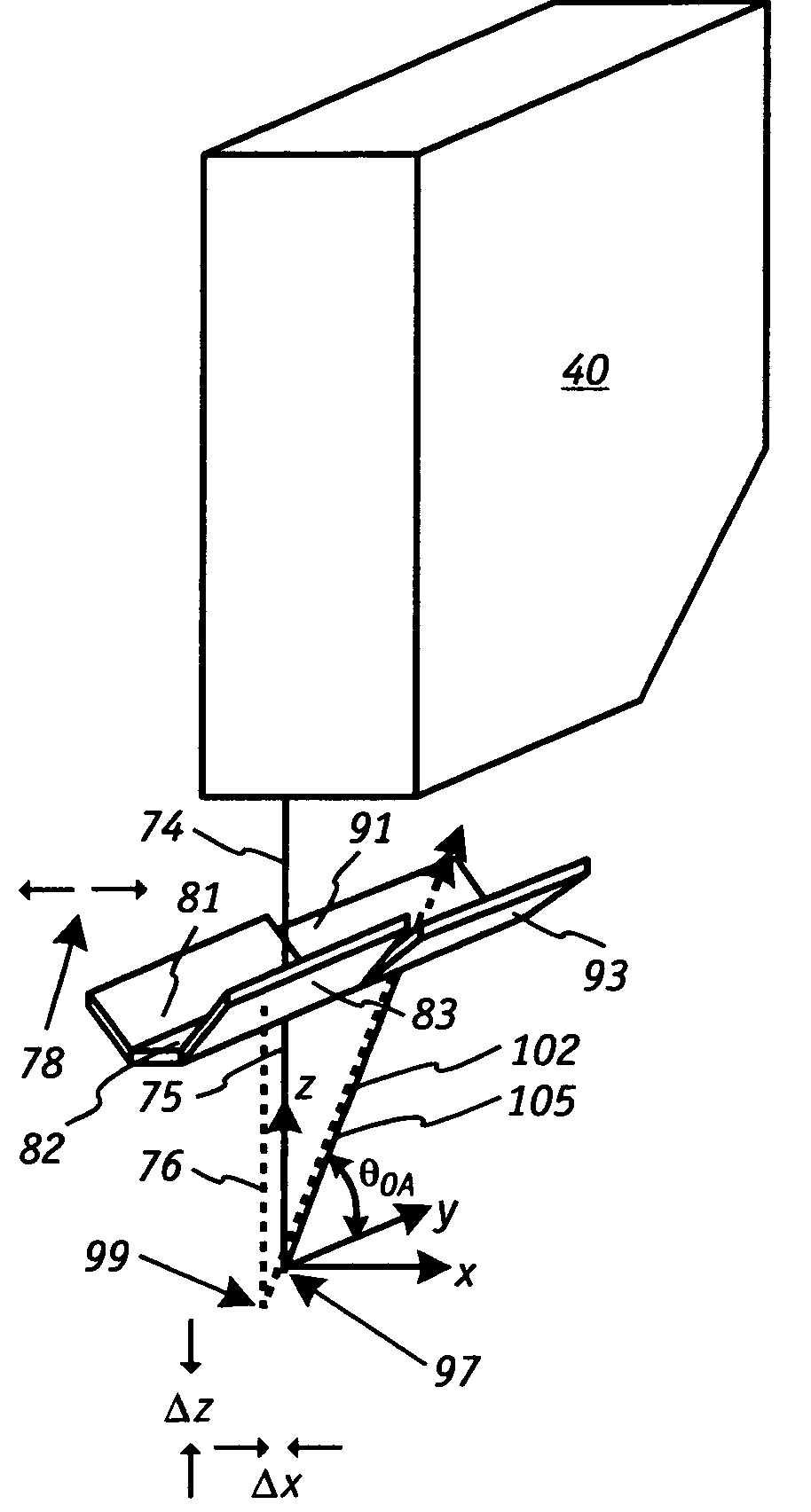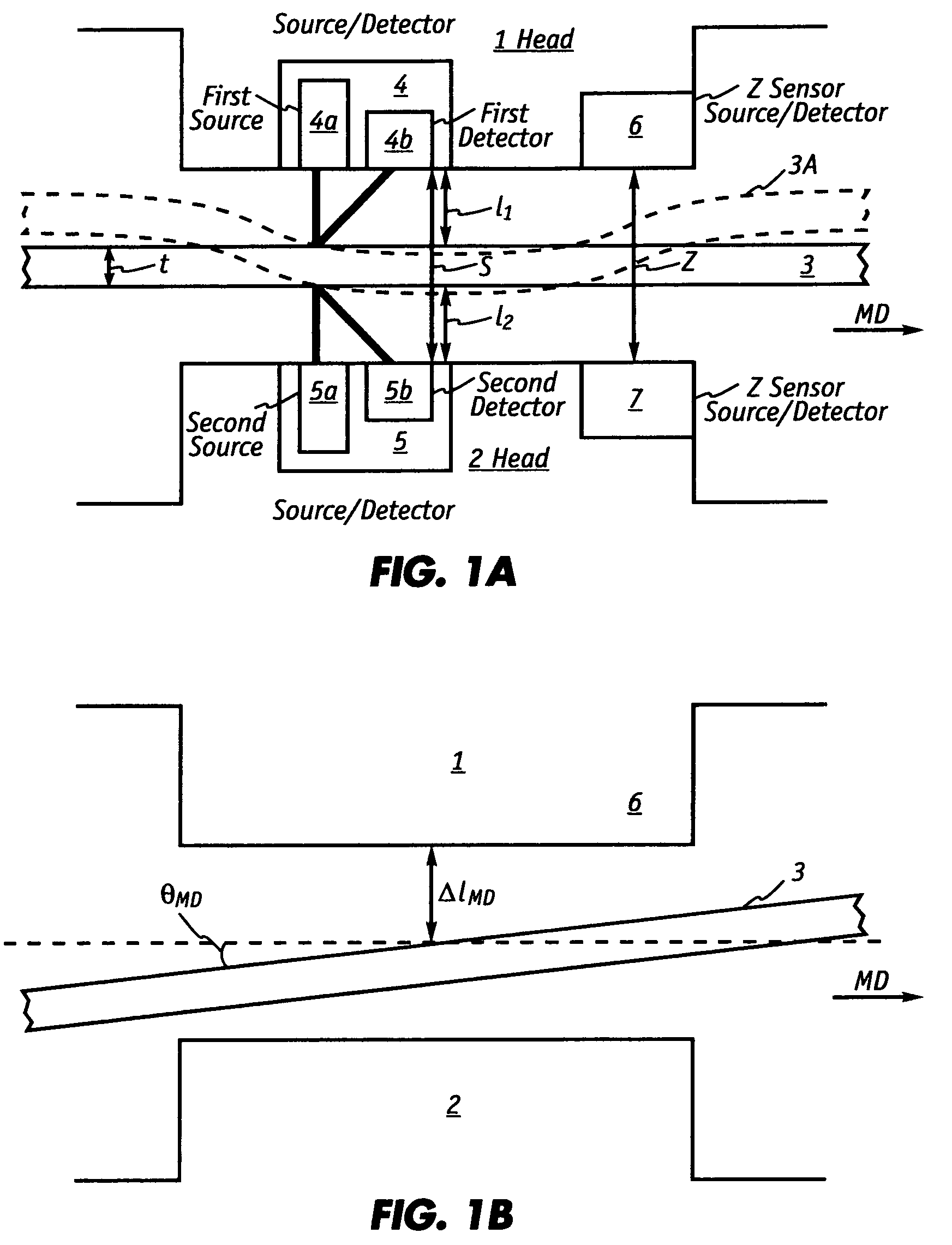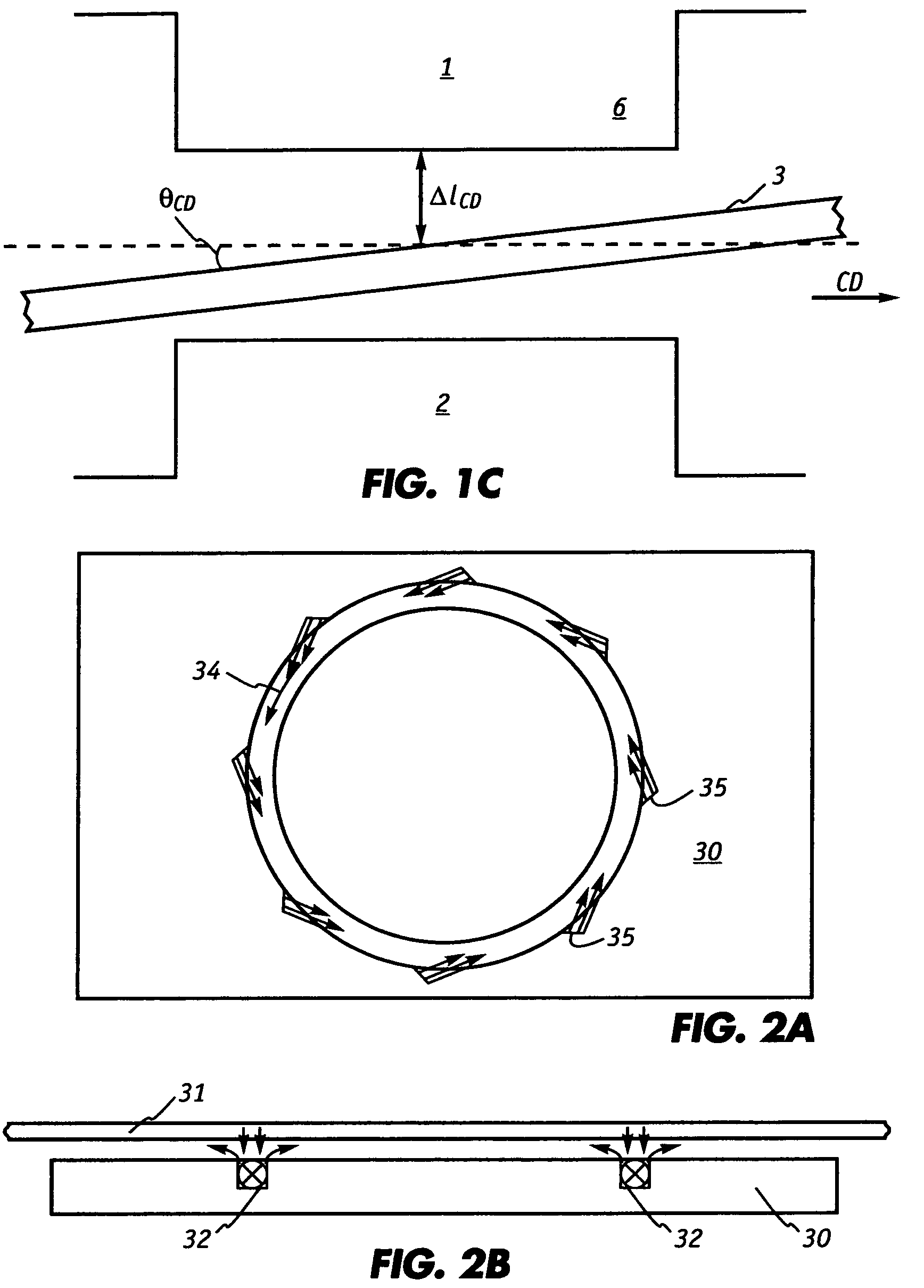Optical translation of triangulation position measurement
a triangulation position and optical translation technology, applied in the field of optical translation of triangulation position measurement, can solve the problems of affecting the quality of paper produced, affecting the contact method, and limiting the method
- Summary
- Abstract
- Description
- Claims
- Application Information
AI Technical Summary
Benefits of technology
Problems solved by technology
Method used
Image
Examples
Embodiment Construction
[0042]The present invention is directed to novel optical translation techniques that can be applied to any distance measuring device that employs the principle of triangulation. These distance measuring devices include, for example, conventional laser triangulation sensors that have a solid-state laser source that emits a beam onto a point on a surface of a target being measured and a detector that is arranged along an oblique ray that images the laser spot from the point and measures its reflected angle with respect to its optic axis. The invention is particularly suited for incorporation into distance measuring devices to move the interrogation spot on the target being measured. Thus while the invention will be described in relation to a paper thickness or caliper sensor that is equipped with sensor heads with laser triangulation sensors, it is understood that the invention can be employed in other devices and applications as well.
[0043]Non-contacting caliper sensors such as that ...
PUM
 Login to View More
Login to View More Abstract
Description
Claims
Application Information
 Login to View More
Login to View More - R&D
- Intellectual Property
- Life Sciences
- Materials
- Tech Scout
- Unparalleled Data Quality
- Higher Quality Content
- 60% Fewer Hallucinations
Browse by: Latest US Patents, China's latest patents, Technical Efficacy Thesaurus, Application Domain, Technology Topic, Popular Technical Reports.
© 2025 PatSnap. All rights reserved.Legal|Privacy policy|Modern Slavery Act Transparency Statement|Sitemap|About US| Contact US: help@patsnap.com



